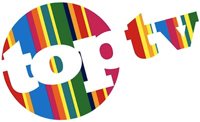
Subscribe & Follow
#AfricaMonth
Jobs
- Production Resource Coordinator Randburg
- Facilities Manager Johannesburg
In the news
TopTV to give DStv run for its money?

According to On Digital Media (ODM), the TopTV parent company, its pay-TV service will contain 54 diverse channels catering for a variety of audiences. The immediate barrier to entry may possibly be the pricing of its decoder, which the subscribers will need to purchase in order to receive the broadcasting signal.
Failed to compel
Broadcasting regulator ICASA has failed to compel Multichoice to make it possible for new pay-TV channels to be available through its decoders.ODM has invested approximately R1 billion to establish TopTV and, with that massive capital injection, it is paramount that ICASA ensures that barriers to entry in the pay-TV market are minimised and regulated in order to allow the new players to thrive in this potentially lucrative market.
In the year to June 2009, Multichoice SA reported that it had acquired 450 000 new subscribers, increased its subscriber base to 2.4 million and grew revenue by 38% to R8.9 billion, while its net profit rose 25% to R 1.9 billion.
ODM is on record saying that only two pay-TV operators can survive in the South African subscription TV market. For TopTV to make it, it will need affordable decoders, competitive subscription fees and compelling programming content.
TopTV bouquets are priced at a range between R99 and R249. The main risk that it may encounter is the resistance by the current DStv subscribers to migrate to the new service, due to the similarity of some of the channels. In the same vein, as MultiChoice decoders won't be compatible with TopTV smart access cards, the churn rate will also be minimised, as for a DStv subscriber to move, the subscriber will need to purchase a new decoder and dish.
Primary target subscribers
ODM has indicated that its primary target subscribers are in LSM 4 and 5, and LSM 6-9.
Since 2007, DStv has changed its primary target market from LSM 9 and 10 to also include LSM 4 and 5, and LSM 6-8.In order to capture the low and middle income earners, DStv now has cheaper bouquets ranging from R20 to R238. The DStv premium bouquet costs R529. Research indicates that the new pricing strategy has allowed DStv to increase its subscriber base.
The TopTV business model is based on acquiring 130 000 new subscribers per annum. As ICASA subscription TV regulations prohibit pay-TV operators from earning the majority of their revenue from advertising, TopTV will have to acquire at least 300 000 new subscribers per annum in the first five years of its operations, in order to stabilise its balance sheet and make the business profitable and sustainable.
South Africa is currently served by three public broadcasting television channels, SABC 1, 2 and 3, in addition to e.tv as the only free-to-air commercial television channel. According to research, it takes about 10 years for a pay-TV operator to break even, thanks to massive startup costs. The pay-TV subscriber base is generally projected on a household rather than as a percentage of the adult population, as generally there will be one subscription per household. It therefore means that even though ODM has identified 5. 5 million potential viewers, the actual number of potential subscribers will be lower, hence the projection of 130 000 new subscribers per annum.
Not appealing
DStv had previously been unable to attract a large number of low and middle income audiences because of its high monthly subscription fee and its programming not appealing to the "black diamonds". Since ICASA introduced steps to bring competition in the pay-TV market in 2006, MultiChoice has changed its DStv pricing model and introduced different affordable bouquets.
Research indicates that with the right programming mix , high number of subscribers, and correctly pitched subscription fee, new pay-TV operator revenue may grow to more than R2 billion after the fifth financial year. Operating expenses for the first financial year are estimated at R900 million growing to R2 billion in the fifth financial year, with nett profit estimated at R600 million in year five.
It has taken at least three years for ODM to raise its start up capital of R1 billion, with more than R120 million allocated to marketing the launch of the new pay-TV service, and the rest of the capital allocated to programming and broadcasting infrastructure costs. As audiences await the new arrival, the reaction of MultiChoice will also be on the radar, in order to see whether the incumbent will further reduce DStv subscription fees or introduce more channels on its different bouquets.
















